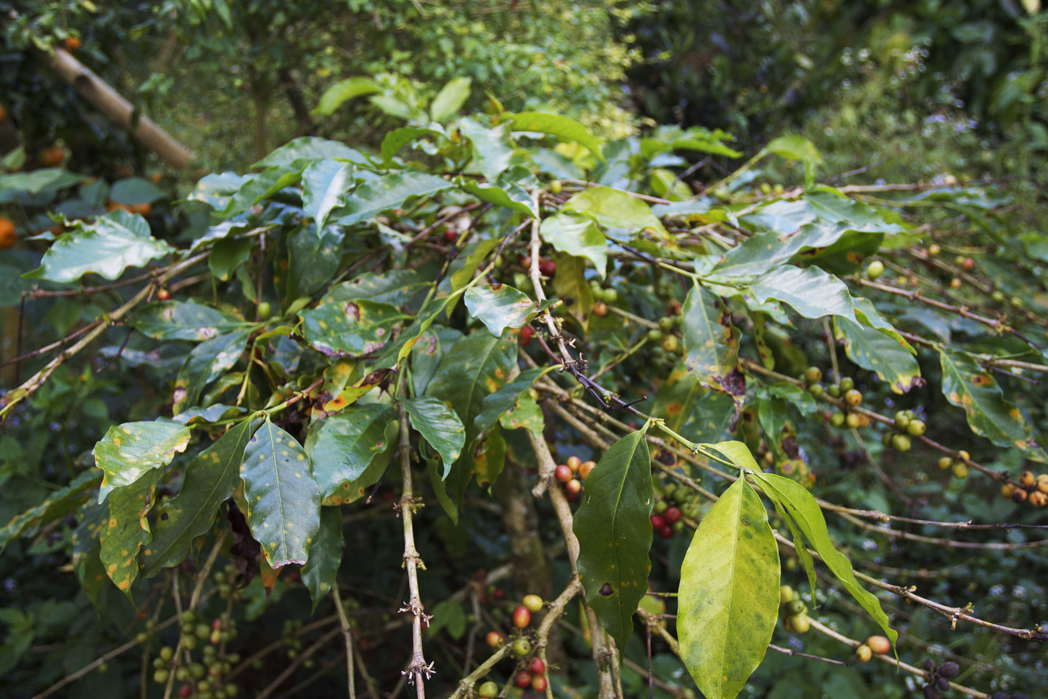Although many factors have contributed to this movement – including state corruption, the threat of gang violence, and a lack of domestic opportunities for social and economic mobility – it is also clear that the state of the coffee economy directly impacts the numbers of migrants arriving at the US border.
The arrival of la roya, or coffee rust fungus, in 2012 caused many coffee farmers to send family members north. Small farmers in Central America were already facing a slump in wholesale coffee prices (due to excess production in Brazil): now the coffee rust fungus threatened to decimate their crops, especially because la roya seemed increasingly resistant to the fungicides that had been used to treat the disease when it first appeared in the 1970s. Climate change also represented a new threat. Increased humidity and erratic, drenching rainfall in the region allows the rust to cycle through its reproductive process more rapidly, allowing for exponential growth.
Faced with environmental catastrophe and low crop prices, many Central American coffee workers and their families choose to walk north, deciding that an uncertain life as an undocumented migrant in the US is less precarious than a future growing coffee in Guatemala, Honduras or El Salvador. Yet this loss of labor exacerbates the pressure on the coffee economy. With fewer workers in the fields, it becomes more difficult to combat coffee rust, resulting in smaller yields of lower quality. Over the past 20 years, coffee exports in El Salvador have fallen by 65%.
Since 2020, coffee wholesale prices have recovered, and the current Central American rust epidemic has subsided, allowing for a period of stabilisation that has been reflected in the lower number of migrants arriving at the US borders from Central American coffee-growing regions. But this is likely to be only a temporary reprieve, as pests and poverty continue to make life as a coffee grower in Central America precarious.
Addressing climate impacts on coffee growing will need long-term solutions. But in the short-term, you can help. Only 5% of coffee sold today in US is fair-trade certified. By buying only fair-trade coffee, and asking your local roasters and coffee shops to do the same, you can help address the structural poverty that drives Central American coffee growers off their land and towards the US border.


